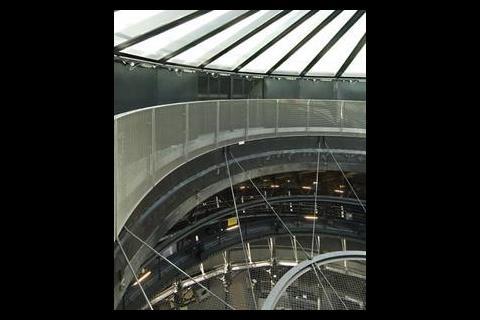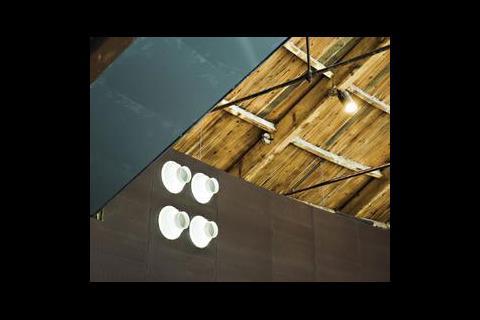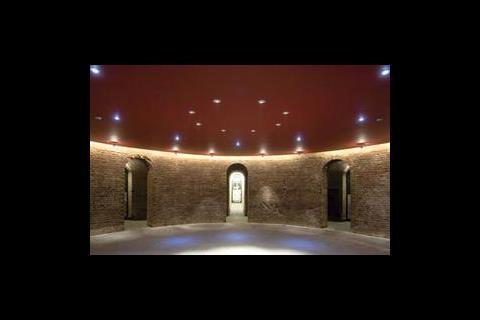From locomotive shed to hip music venue, this building has had an eventful past - now a major refurbishment has given it a new lease of life. Stephen Kennett on the return of the Roundhouse
- How a major refurbishment turned around the fortunes of the Roundhouse, one of London’s most exciting but dilapidated music venues.
- Strict limitations on how the listed structure could be altered proved challenging when upgrading ventilation systems.
- Live music studios, an auditorium and digital media suites replace what used to be a gin warehouse, with heavily insulated spaces to adhere to acoustic regulations.
London's Roundhouse has a varied past. It began life as a locomotive shed, later became a gin warehouse and, in its heyday as a concert venue, hosted performances by the Doors, Pink Floyd and Jimi Hendrix. Now, after a £29.7m overhaul, it's about to reopen as a state-of-the-art performance venue.
Turning Camden Town's iconic building into a venue fit for everything from intimate repertoire theatre to full-on rock concerts has required a delicate touch from the design team, which included architects John McAslam & Partners, services engineers Buro Happold and structural engineers SKM Anthony Hunt. The main challenge, says Steve Macey of Buro Happold, was finding a way to retain the unique atmosphere and character of the space while conserving the building's historic structure.
The Roundhouse was built in 1846 by the railway pioneer Robert Stephenson as an engine turning shed, housing a turntable capable of spinning round the huge steam trains coming out of the nearby Euston station. This circular area is now the main performance space. Its diameter is similar to that of the Royal Albert Hall and it is able to hold 3,300 people standing and 1,800 sitting - but as few as 500 for more intimate theatre.
Varied demands
"The biggest issue was how to provide ventilation to the main performance area," explains Macey. "This was partly because of the strict limitations on what could be done with the building's structure and also the need to provide flexibility to meet the demands of varying audience levels". For the smaller shows, with less than 1,750 people, productions will rely on unamplified sound and so background noise levels of NR25 must be maintained.
The solution uses a number of complementary ventilation systems that can be adjusted to provide fresh air appropriate to the level of occupation. The main one is a displacement system that neatly introduces fresh air from a single air handling unit via 12 ash pits (used when the locomotive's fire boxes were cleaned out) set in the floor around the central performance area. Re-using these helped minimise structural intervention.
"Displacement was the most appropriate way to meet the minimum fresh air requirements and noise criteria," says Macey. "It also acts as a variable volume system, in that if we've only got half the total audience capacity we can turn the system down". The main air-handling unit serving the space has variable speed fans that allow the system to operate down to 30% of total capacity, gradually increasing as air quality or rising temperature dictates. A small chiller provides supplementary cooling.
Additional air can be supplied via displacement terminals set into the walls at balcony level. These only operate during periods of high occupancy and will be isolated by automatic dampers the rest of the time.
However, supplementary air is required for audiences over 1,750 and is supplied by smaller air-handling units, located high up on the balcony level around the perimeter of the auditorium, which blow air through jet nozzles towards the centre of the space. In these scenarios, amplified sound will be used so the low noise criteria can be relaxed to NR35.
Air is extracted at high level via three fans housed in the domed roof. Controlled to match the supply rates in the space below, these provide the facility to purge the main space at night and remove internal heat build-up.
The demise of the Roundhouse as a major rock venue in the ‘80s was partly down to complaints from local residents about noise. In its new incarnation, the extract fans are housed inside an acoustic plenum to prevent noise outbreak. "It was a case of addressing the weak spots," says Macey. These also included the main roof and the rooflights. Looking up from the inside, the original roof timbers and covering can be seen; however, a new steel frame has been constructed above this which supports a new sprung roof with heavy mass insulation.
The original roof glazing has also been replaced. When Gilbeys used the Roundhouse as a gin warehouse, it blacked out the glass rooflights to prevent sunlight from shining directly onto the bottles. These are now replaced with double-glazed units, with a third pane of glass for further acoustic shielding.
The rooflights incorporate blackout blinds as well as integrated LED lighting that can change colour and operate in sequence to appear as if it is moving around the building.
Torquil Norman's vision
The refurbishment of the Roundhouse was the vision of Torquil Norman, founder of Bluebird Toys. When Norman bought the empty building back in 1996, one of his aims was to establish a creative centre for 13-23 year-olds.
This has been realised in the space beneath the main auditorium, where the mechanism powering the turntable was originally housed. Live music studios, digital media suites, dance rehearsal rooms, a film production studio and a radio station have been created in the chambers and tunnels that are left behind.
The Roundhouse is due to reopen on 5 June with Fuerzabruta, a new airborne spectacular from the creators of the hit De La Guarda. It's a far cry from the likes of Jimi Hendrix and Pink Floyd, but it marks another chapter in the history of a remarkable building.
Project team
Client: The Roundhouse Trust
Architect: John McAslam & Partners
M&E consultants: Buro Happold
Structural engineer: SKM Anthony Hunt
Acoustic consultant: Paul Gillieron
Source
Building Sustainable Design
Postscript
Original print headline: "Coming around again" (Building Services Journal, June 2006)



























No comments yet